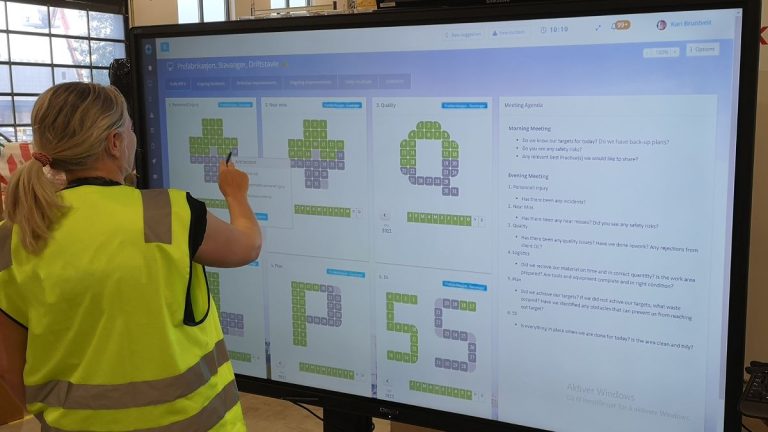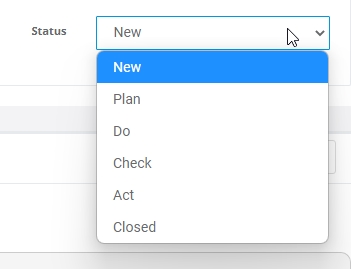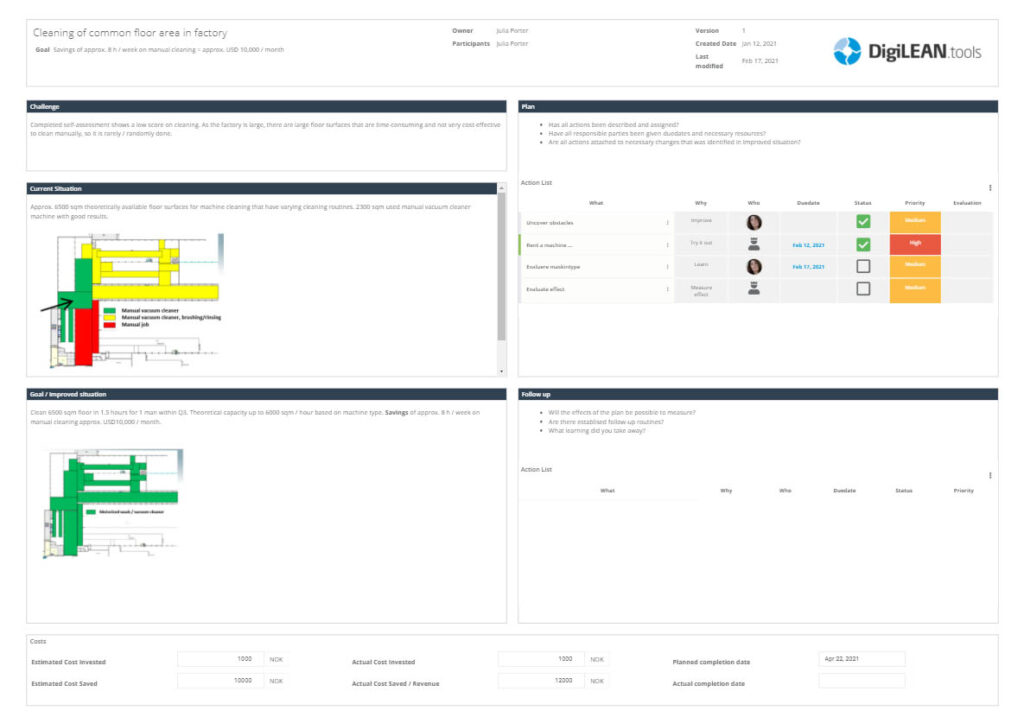- Product
Interactive boards. Fully customizable.
Capture, prioritize and follow up improvements.
Report and manage incidents. Visualize reports and statistics.
Operationalize your strategies and integrate your whole organization.
Access your tools in Microsoft Teams.
Customized templates. Problem solving, business development etc.
Manage project individually or in portfolios with visual and interactive tools.
Create and share best practices, one-point-lectures and standards.
Easy access to tasks, improvements and incidents.
Integrate DigiLEAN with your existing IT systems.
Meeting the demand of larger organizations.
High security level by default.
In less than 4 min
- Use Cases

Interactive tools for both shop floor and administration.
Visual project management.
Maintain standards. Manage incidents and discrepancies.
Manage tasks, integrate with problem-solving and continuous improvement.
Lean daily management tailored for healthcare.
Team task management, problem-solving and visualization.Case management, improvements, problem-solving, and strategy alignment.We have a LEAN solution for you too. Just ask!
We meet the demand of larger organizations.
- Pricing
- Shop Floor
What is A3 Problem Solving?
Every decision we make is solving a problem. We train every day to make decisions based on knowledge and experience, both in our private life and at work. We strive to be autonomous in order to use our capabilities elsewhere. This is how we are made by nature.
A3 Problem Solving helps us solve problems more accurately and more effectively.
A3 Problem Solving is both a methodology and a tool used to solve problems with a certain complexity, and helps teams navigate in a jungle of stakeholders and variables.
Where does the A3 come from?
A3 is standard paper size and is also the reference to the A3 problem solving. The paper A3 measures 11,7″ x 16,5″ (297 x 420mm).
The limits of the paper size forces the users to narrow down the content to the essentials and keep all relevant information on a single sheet of paper.
A3 problem solving template
The A3 problem solving template creates a structure helping you work through the process, identify and follow up mitigating actions

Challenge
Describe the problem you are facing. Consider the need, whether it’s internal or external. Is it possible to measure the benefit? Are you able to identify when the problem is solved?
Current Situation
Describe the current process. Make sure it includes the problem. What is the reason the problem appears? Does it reside in standards, procedures, process descriptions?
Add facts and figures to help explain and understand the situation.
Goal / Improved Situation
Describe the desired situation the way it should be. Make sure the root cause is addressed in this description and to discuss and involve all relevant stakeholders.
Plan
Describe the plan and establish actions for execution. This is the actual activities to be done to solve the problem.
Actions shall have good description, a responsible, a due date and status.
Assess if the actions are likely to help solve the problem.
Follow up
Create a plan to measure the changes of the problem. Evaluate if the actions lead you in the right direction. If not, revert back to the plan to recalibrate actions, or update the goal if the initial goal was not defined appropriately.
When the goals are achieved, add your learning and evaluation to share with others.
Download your A3 template for free
The A3 problem solving process
Initial success factors are (1) to use the A3, (2) to give the A3 an owner and (3) include a list of relevant participants.
You are not (necessarily) supposed to fill out the A3 in one day. This is a process that could be considered a small project. Therefore you can also add a timeline and milestones to the A3 to help clarify the expectations and the path for the process.
The template helps focus on the relevant content, leading you to solve the problem.

Plan – Do – Check – Act (PDCA)
The planning phase is the first development of the A3, problem description, goal and action plan.
The second phase is first execution of actions. Based on the plan, there should be a qualified foundation to implement changes.
Check if the actions brings you closer to the solution. Do they provide the results you expected? Do you need to adjust?
Make adjustment to the plan and actions continuously until you reach the desired state. At this point you can evaluate and sum up the best practice and close out the A3.

Sharing and visualizing problem solving A3
Use the 3 pillars of continuous improvement to get the most out of the learning.
- Employee involvement
- Transparency
- Knowledge sharing
When the A3 report is finished, add it to you visual boards for everyone to see. Go through the process and learning with your teams and let involve them in the learning.
The solution may be an update to the best practice, standard work or a procedure. Everyone needs to know.
The A3 also works as a reference to understand the background of the problem. This may be transferrable to other problems or situations raised later.
Solving problems with digital A3
No, I’m not talking about A3s based on Word, Excel or PowerPoint.
I mean fully interactive, digital A3s with integrated action lists. When you combine this with digital boards, incident- and improvement management, you have a great platform to digitize lean tools.
Book a demo to learn more!

